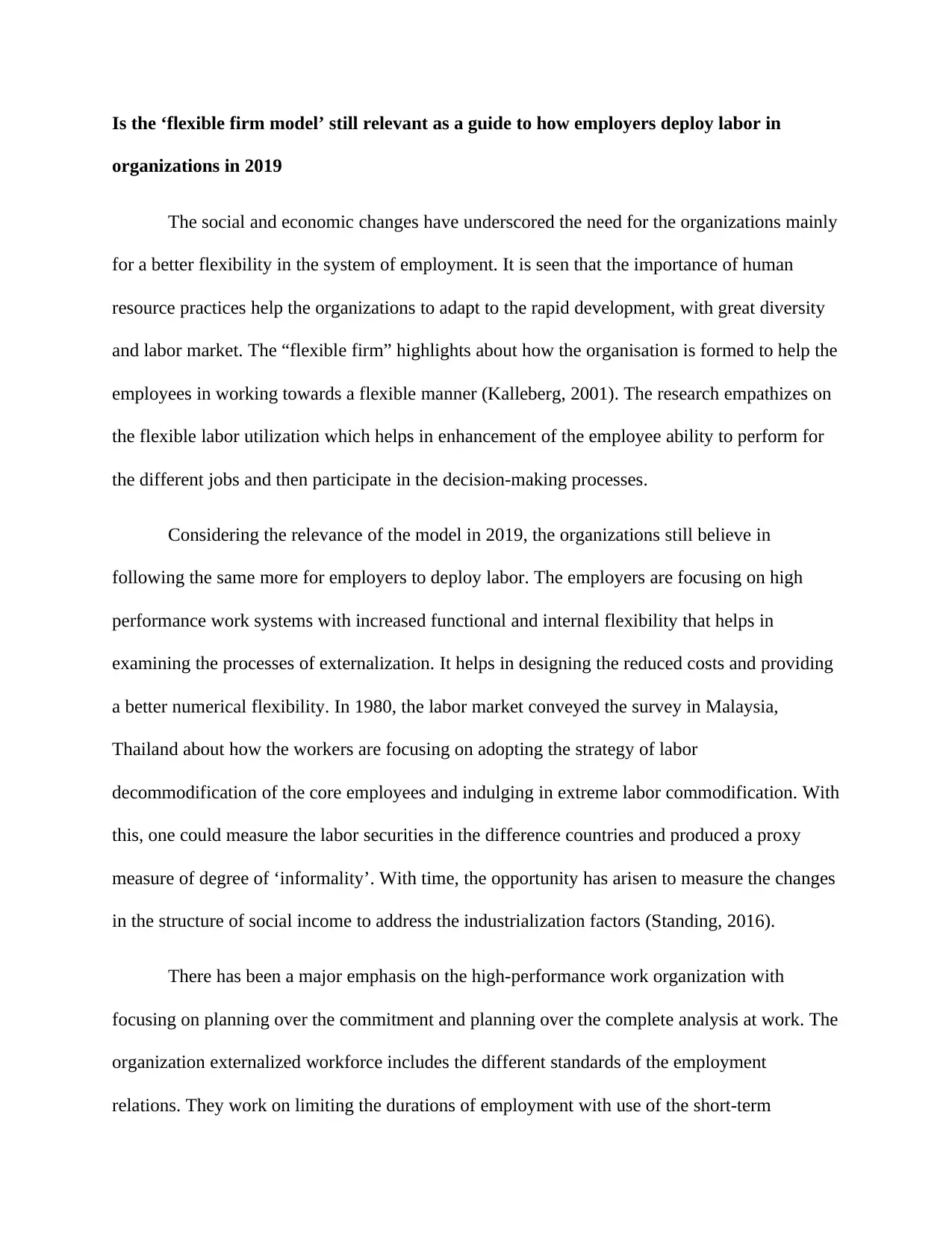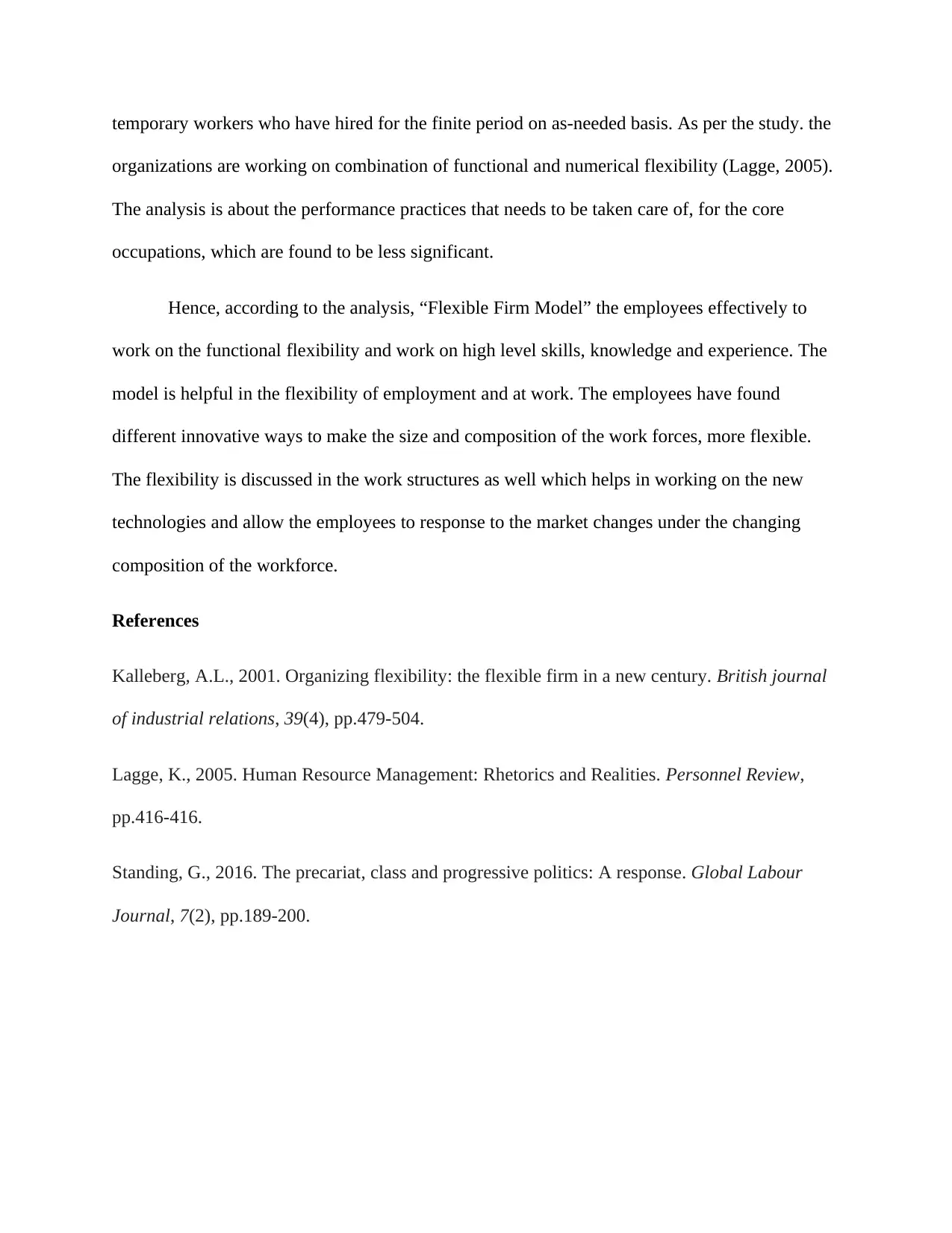Relevance of the Flexible Firm Model in Modern Organizations
VerifiedAdded on 2023/01/17
|2
|577
|36
Report
AI Summary
This report provides an analysis of the flexible firm model and its continued relevance in contemporary organizational structures. The report examines the importance of flexibility in employment, driven by social and economic changes, and the role of human resource practices in adapting to a diverse and dynamic labor market. It explores the concept of flexible labor utilization, which enhances employee capabilities and participation in decision-making. The report highlights the focus on high-performance work systems, functional and numerical flexibility, and the externalization of workforce elements. It references the evolution of labor market strategies and the impact of these changes on employment relations, including the use of temporary workers and the emphasis on core competencies and skills. The analysis concludes that the flexible firm model remains relevant, particularly in its ability to enhance functional flexibility, adapt to technological changes, and respond effectively to market shifts by managing workforce composition.
1 out of 2








![[object Object]](/_next/static/media/star-bottom.7253800d.svg)